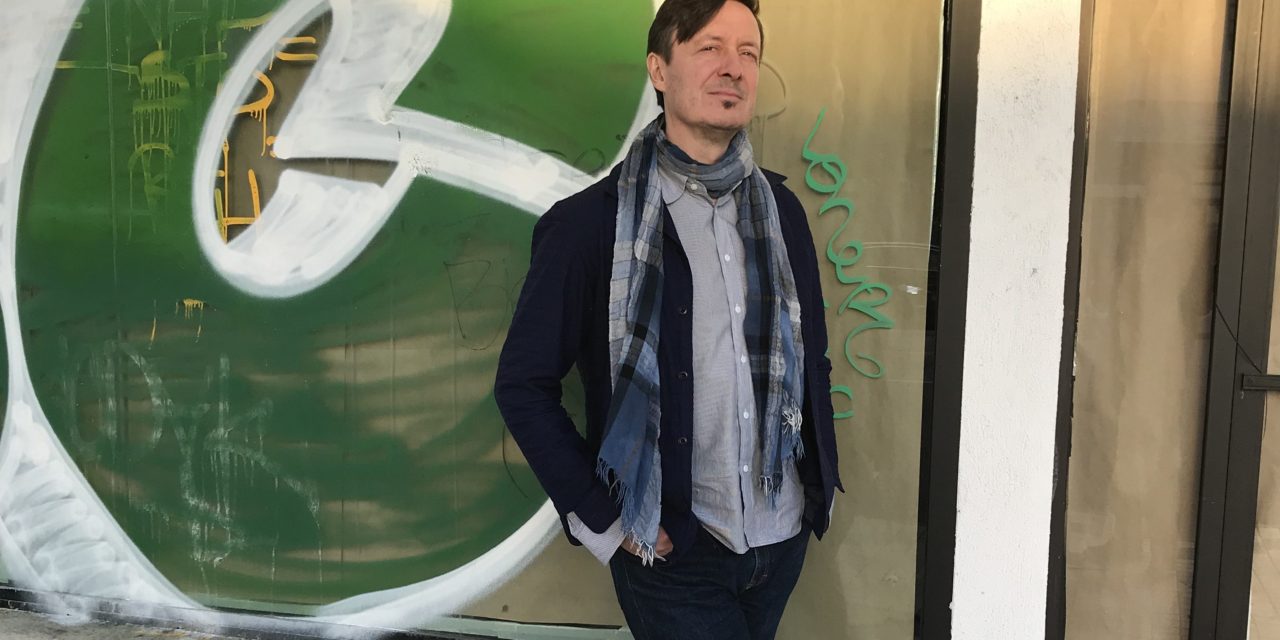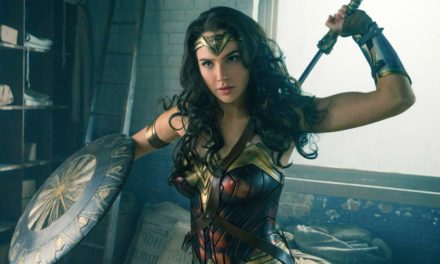Credit: John Corbett
Editor’s Note: John Corbett is a Co-Owner with Jim Dempsey at Corbett vs. Dempsey in Chicago, Illinois. For 15 years, Corbett has used his diverse background in music and film to work with Dempsey and put together unique and insightful exhibitions– from a feature of Midwestern artists, to an exploration of vintage tapestry. Their recent work includes an exhibit at the Felix Art Fair in Los Angeles. Corbett is a graduate of Brown University, with his post-graduate work done at Northwestern University. On March 1, Corbett’s novel, Pick Up the Pieces: Excursions in Seventies Music, will be released to the public.
This interview was conducted via email.
Sophia News: Tell us a little bit about your journey into the world of art.
John Corbett: I really came to visual art through music. Since I was a kid, I was dedicated to collecting records and learning about the world through all kinds of music. My dad, who’s a doctor, always secretly wanted to be an artist, and he instilled a reverence for the range of possible ways to make art, and as a high school kid I started taking it seriously, drawing and making collages, even painting a little, but music was always foremost in my heart. I had a couple of great friends, Phil Kirk in high school and Ben Portis a few years later, who were extremely influential in terms of understanding and critically appreciating visual art. In their own ways, they helped me understand how to look at things. With Ben, I did some grunt work at the Renaissance Society, where I met the painters Albert Oehlen and Christopher Wool in 1989. Around that time, I went to grad school in Radio/Television/Film, applying film theory to the study of recorded music, and along the way I got very interested in video art and performance, so those were equally important in my artistic education. When I started teaching at the School of the Art Institute of Chicago, it was in the Sound Department, but I meandered my way around over the course of nearly 30 years, and wound up teaching in Exhibition Studies and Painting and Drawing. That was around the time we founded the gallery in 2004. By then my obsession with the history of visual art in Chicago had to a series of independent exhibitions and eventually to partnership with Jim.
SN: How did you and Jim Dempsey meet, and what inspired you to open a gallery together?
JC: We knew each other from different domains of the cultural world that we were in – me in music, Jim in film. We knew each other for years just enough to say “hey, how’s it going?” And then one day in about 2002, Jim invited me to work on a project with him. We hit it off and decided to work together more. From 2004 to the end of 2018, we worked side by side at the same table. Now, in our brand new gallery space, we’ve allowed ourselves the luxury of separate desks. Feels a little weird.
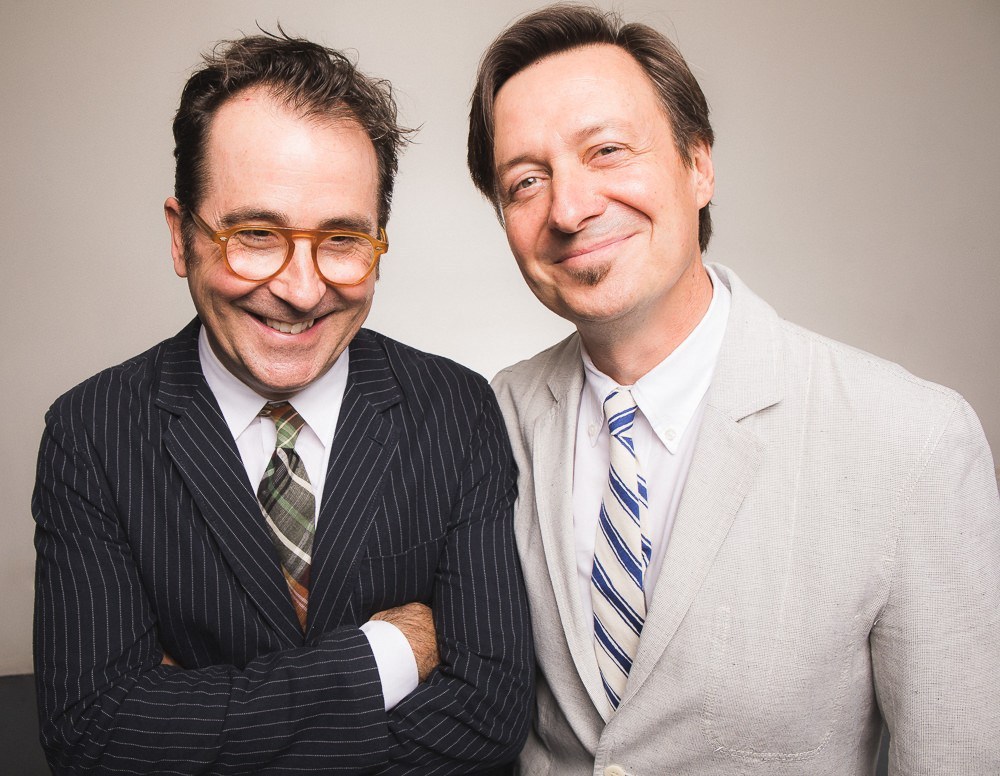
Jim Dempsey (left) and John Corbett (right). Credit: Corbett vs. Dempsey
SN: Why the competitive nature of including “vs” in your gallery name?
JC: Well, we were both blessed with names of famous boxers: Jack Dempsey and “Gentleman” Jim Corbett. When we went fishing for a name for the business, it seemed a shame not to make use of that. Funny thing is that Dempsey and Corbett didn’t ever fight, since they were from slightly different eras. But we thought it was distinctive to have “versus” in the name of a business, and it was maybe funny and naming ourselves that felt a little like tempting fate. As it turned out, we haven’t had much stressful competition, but the way we work is extremely collaborative, with every move worked out together through conversation and debate, so in another way, the name makes some kind of sense.
SN: You are invested in music and film—how does that play a part in selecting what curating pieces for your gallery?
JC: I started presenting creative jazz and improvised music when I was in college, quite diligently, and that’s been a huge part of my life. A little later I began writing seriously about music, too, and I still do. So from my perspective, music has just informed my whole life, rather than a specific curatorial or gallery selection. There’s no direct, one-to-one relationship like that. Nonetheless, the whole set of questions that Jim and I pondered when we started the gallery, which had to do with why we knew so little about our city’s visual arts legacy, why it had been so poorly documented and so incompletely studied, those questions mirrored the same sort of questions that I’d been exploring in relation to Chicago’s rich jazz tradition, which was less well known that New York’s. And I spent a lot of time learning about the improvised music scenes of the ’60s and ’70s in Europe, also not so well known to most American listeners. I was curious what kept that music from entering the basic musical canon, what kept most jazz fans from knowing who Von Freeman or Fred Anderson was, and why so many Chicago jazz musicians felt that they needed to leave town in order have their shot at the spotlight. The visual arts scene here had a similar quality; it was overshadowed by New York and later Los Angeles, which each were home to important magazines and critics and curators, all gatekeepers to the popular imagination. The dynamics that kept Chicagoans out of those venues – both musicians and artists – I found that especially intriguing.
SN: Initially, your gallery had a high focus on Midwestern artists? Other than geographical location, what drew you to this specific subset of artists? Do you find it varies much from artists in, say, New York?
JC: I think the previous answer gets into this. But it’s more than just a reflection of power politics, it’s also something in the Midwest character. Of course, there’s no such thing as one Midwest character, but in different ways here you find a kind of second city syndrome, a humility that borders on self-abnegation. It’s not consistent with the quality of the work, but it’s there – Midwesterners sometimes act like they don’t deserve to be on the main stage. OK, so what drew me to the art here had, in some way, to do with this. Namely, that Chicago artists are more often than not uncompromising. They aren’t trying to please anyone. They don’t bend to commerce because, historically, there’s been so little of it here. All of which makes them singular, sometimes eccentric, and often, in that singularity verging on eccentricity, very powerful.
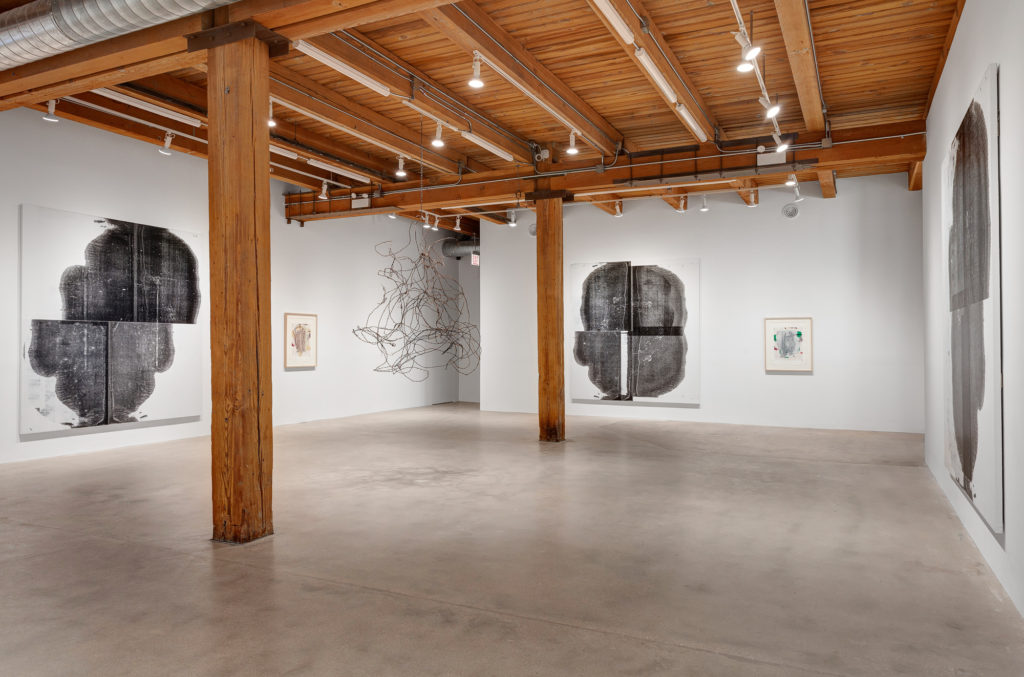
Credit: Corbett vs. Dempsey
SN: Do you think working as partners on an exhibition puts you at an advantage over other gallery owners? Do many conflicts arise, or are you generally on the same page?
JC: I can only speak for us, that working collaboratively is the only way we know how to work. Through respectful argumentation and debate, trying out as many iterations as we can imagine, building and then taking away. Jim often says that the best hang comes from assembling everything that might be in a show and then pulling them out one-by-one until the house of cards would fall. Just before that is often the right point.
SN: The two of you exhibit art across the country. Does your approach to curation differ based on where the exhibition is? Do you take more risks home, or away?
JC: I don’t think it varies in terms of risk. But it’s definitely context dependent. We thought a bit differently about the show we did with Ian Berry at the Tang Teaching Museum in Saratoga Springs than we did about the room we worked on with artist Josiah McElheny at the Carnegie International in Pittsburgh, and both of those were quite different from our new show with Christopher Wool back home in Chicago. The type of venue – commercial/non-commercial – and the requirements and limitations of the space, as well as the presence or absence of other curatorial projects in that space, these are all important considerations. And budget. Of course that determines some things about what you can and can’t accomplish. But we’re used to working with small budgets. We come from experimental film and improvised music, after all.
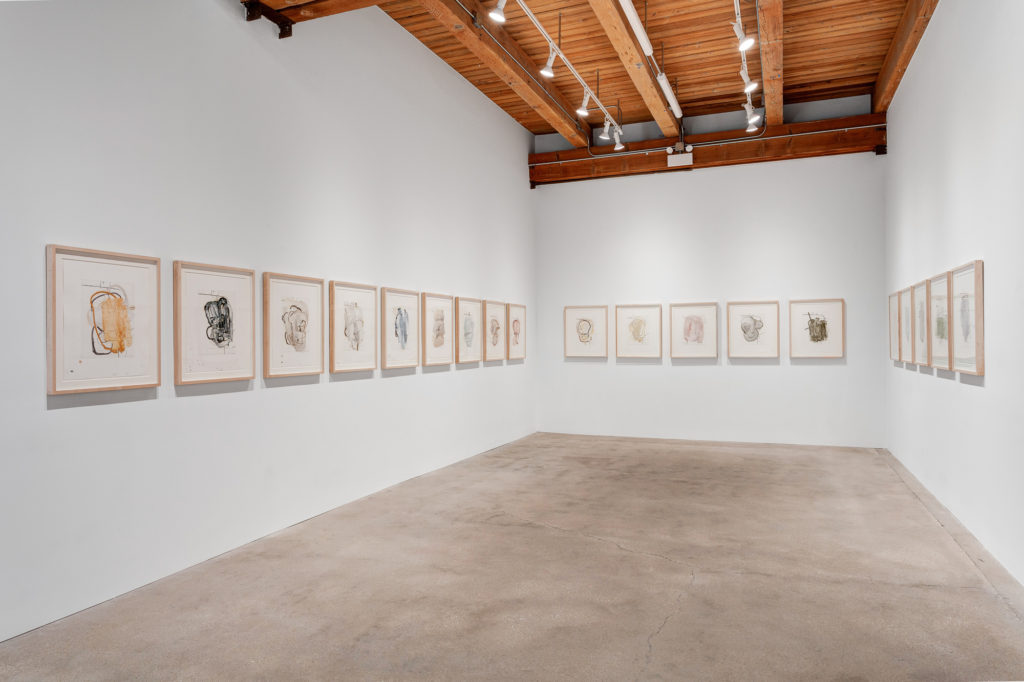
Credit: Corbett vs. Dempsey
SN: Is there a particular curator that either of you admire? What about their work inspires you?
JC: I’m inspired by many of our colleagues, too many to single one out. There are historical figures who have made an imprint on us. I think of Walter Hopps, naturally, and Katherine Kuh, such a signal curator at the Art Institute of Chicago, and commercial gallerists like Edith Halpert and Virginia Zabriskie. The art business sometimes has a reputation for being populated by snakes and sharks, and there are certainly plenty of those beasts, but there are so many brilliant, creative, ethical, empathetic folks dealing with art. It’s an honor to be part of the community.
SN: Is there a particular piece of art in your gallery that resonates within you every time you look at it? What is it, and why does it have this effect?
JC: I have a painting at home by Gertrude Abercrombie, wonderful weird 20th Century Chicago painter, a Midwest surrealist. It’s tiny, maybe an inch by two. It depicts a little black female cat with her kittens. On the wall behind the cat is a painting of another cat. It’s so delightful that it fills me with glee every morning when I look at it.
SN: What new and exciting things do you have in store for your gallery this year?
JC: It’s going to be an exciting year. We have solo shows of new work by Karl Wirsum, one of the original Hairy Who artists, and British painter Caragh Thuring, as well as a historical debut of 1970s sculptural works – all shaped into sarcophogi and decorated with hieroglyphs – by Emilio Cruz. And two significant textile shows, one by the great young Swiss-born artist from L.A. named Christina Forrer and another of vintage tapestry works by the great Moki Cherry, many of them made for performances with her husband, trumpeter Don Cherry. We’ll have some music at the gallery. We’ll show archival materials in our new space, the Joseph J. McPhee Jr. Research Library and Listening Room, aka the McPhee. And Josiah McElheny will be outfitting our bar – dubbed the McElheny Refreshery – based on Dominique De Menil’s closet bar in her home in Houston.
For more from John Corbett, buy his book, Pick Up the Pieces: Excursions in Seventies Music, on March 1.
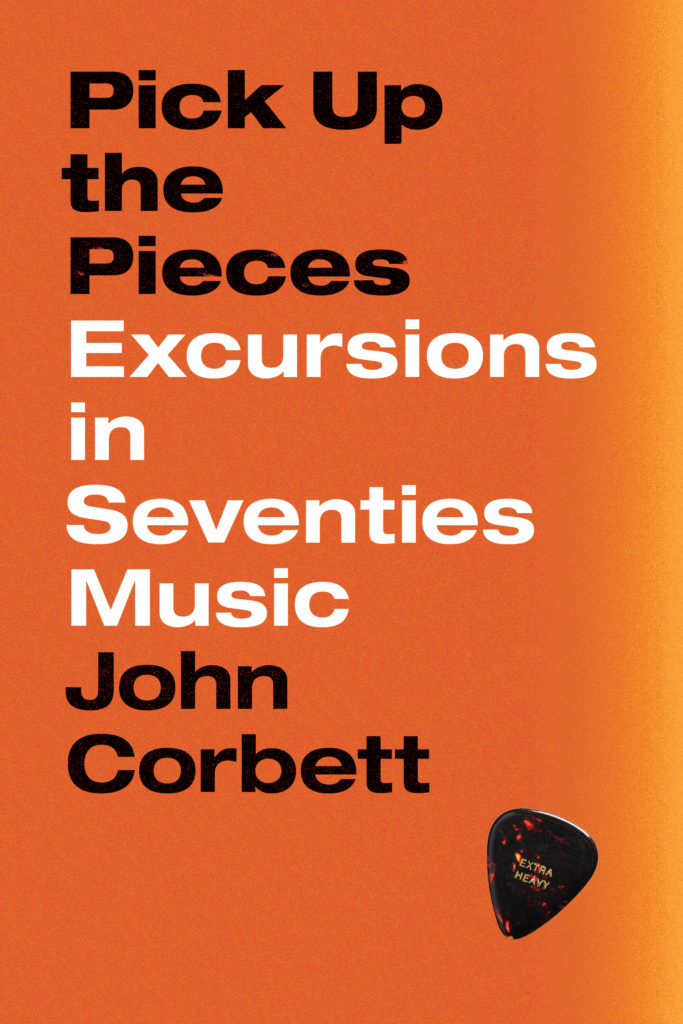
Credit: John Corbett
